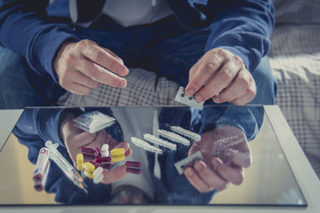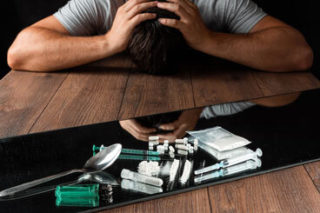Drugs of Choice
Americans have been educated about the impact of drug addiction for many, many years. Nevertheless, millions of Americans still try marijuana, alcohol, or cocaine for the first time every single year. For some people with a substance use disorder, it took a short time to move from experimentation to addiction to needing a recovery treatment program to stop using.
Some of the most commonly abused drugs include:
Your path to recovery is waiting
and we’re here to help.
Our admissions specialist are available 24/7 to listen to your story
and get you started with next steps.
When you call our helpline, you will be connected with a caring admissions navigator to discuss your options for treatment.
Since 2002, the use of illicit drugs has continued to be on the rise. Illegal drugs include depressants, hallucinogens, marijuana, opioids, and stimulants. Opioid and opiate drug addiction has seen a massive jump in the United States in the last several years due to prescription pain killers. Many people start using a prescription to relieve pain and develop a dependence on opioids to function from day-to-day.
Drug Abuse Basics
Drug abuse is widespread in the United States and beyond. While this many know this, putting a number to the rates and frequencies of drug use helps to put things into perspective. The Substance Abuse and Mental Health Services Administration (SAMHSA) collects data about drug addiction. The following are some notable statistics taken from a 2016 study:
- 28.6 million people aged 12 or older used an illicit drug in the past 30 days
- Among people aged 12 or older, 24.0 million were current marijuana users, and 3.3 million were current misusers of prescription pain relievers.
- An estimated 11.8 million people misused opioids in the past year, including 11.5 million pain reliever misusers and 948,000 heroin users.
- Approximately 20.1 million people aged 12 or older had a substance use disorder (SUD) related to their use of alcohol or illicit drugs in the past year, including 15.1 million people who had an alcohol use disorder and 7.4 million people who had an illicit drug use disorder.
- An estimated 21.0 million people aged 12 or older needed substance use treatment
These drug abuse statistics point out the growing, universal problem with drugs in the United States. As more and more individuals struggle with substance use disorder, the need for drug addiction rehab increases.
Signs of Drug Addiction
Drug addiction is a silent killer. While many think recognizing a drug addiction is easy, far too many individuals realize that a loved one is suffering until long after the addiction has begun. The signs and symptoms linked to drug addiction vary based on the drug of choice, but there are a few common signs of addiction. Generally speaking, drug addiction symptoms are grouped into two main categories: behavioral and physical symptoms.


